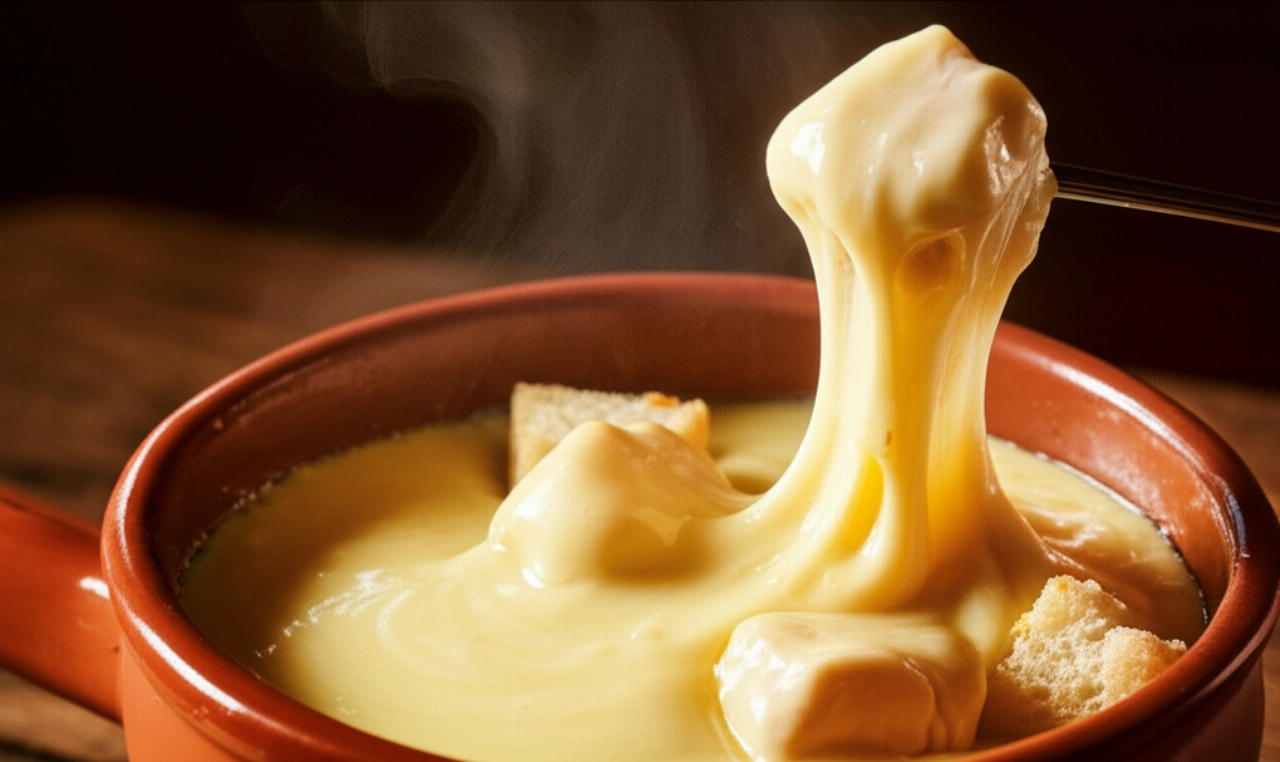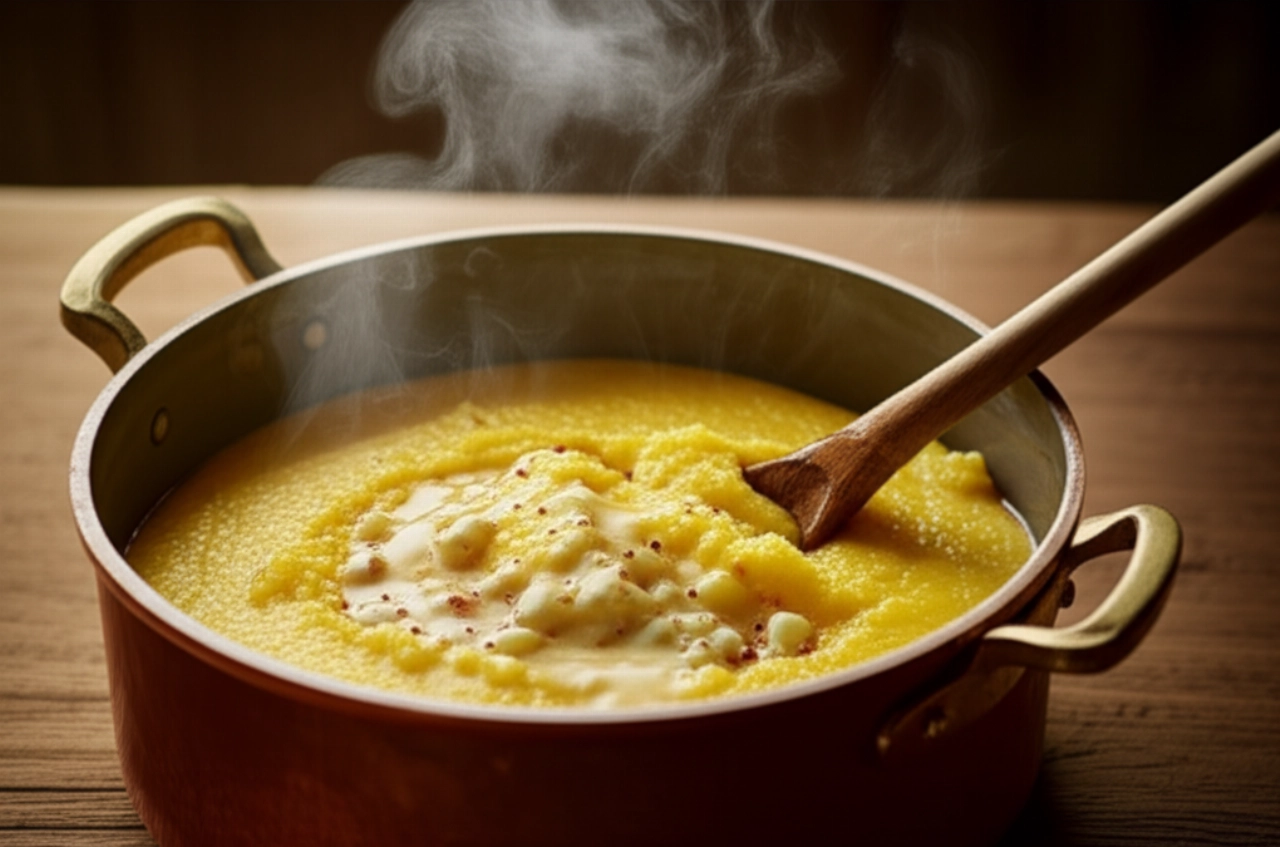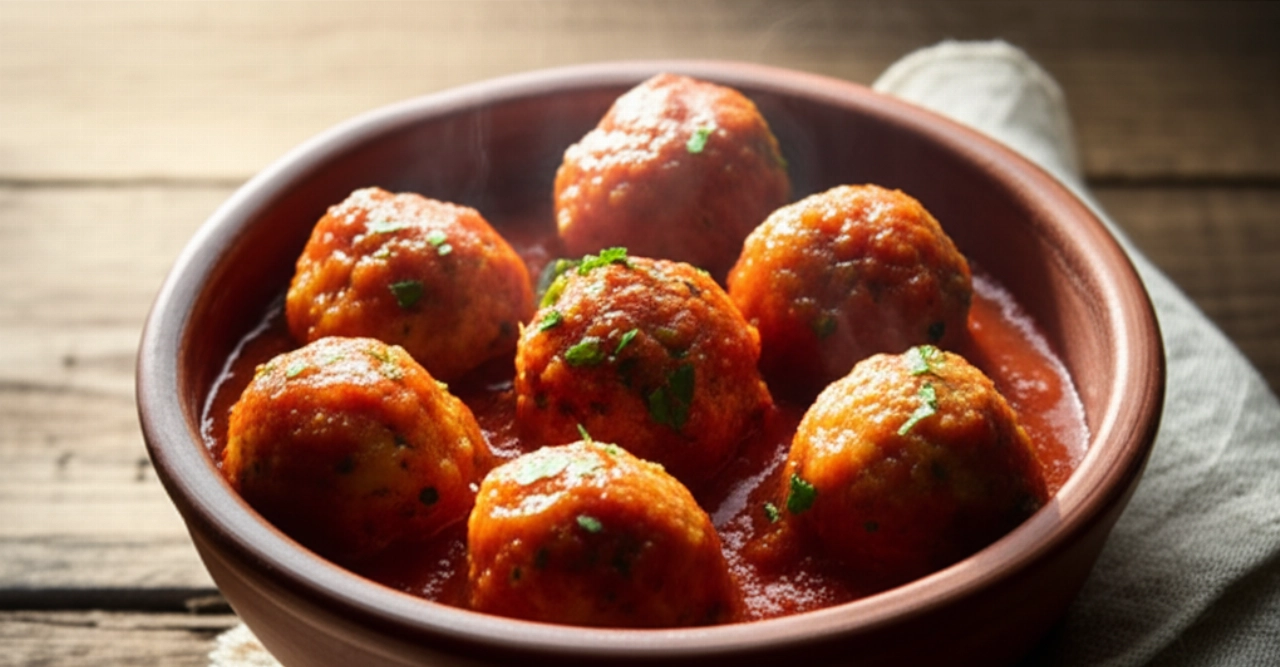Imagine the enveloping aroma of melted cheese wafting from the kitchen, a scent that speaks of mountains, warmth, and authentic tradition. Do you dream of bringing to the table a dish that is a true embrace, capable of warming the heart and delighting the palate of all your guests? We are talking about Polenta Concia, a masterpiece of Aosta Valley cuisine, a unique dish that is much more than just polenta with cheese: it's a sensory experience.
But how many times have you tried to make it and found yourself with lumpy polenta, cheese that didn't melt properly, or a result far from that enveloping creaminess and stringy heart that make it legendary? Finding the right recipe, one that guarantees success without anxiety, can seem like a real challenge.
Make yourself comfortable. Here on Search Recipes, your trusted kitchen, you won't just find a list of ingredients, but the definitive guide, full of tricks and tips, to prepare the best, creamiest, and stringiest Polenta Concia of your life. Success is guaranteed, and your palate will thank you! I will guide you step by step, revealing all the secrets for a result that will make anyone who tastes it exclaim "Wow!"
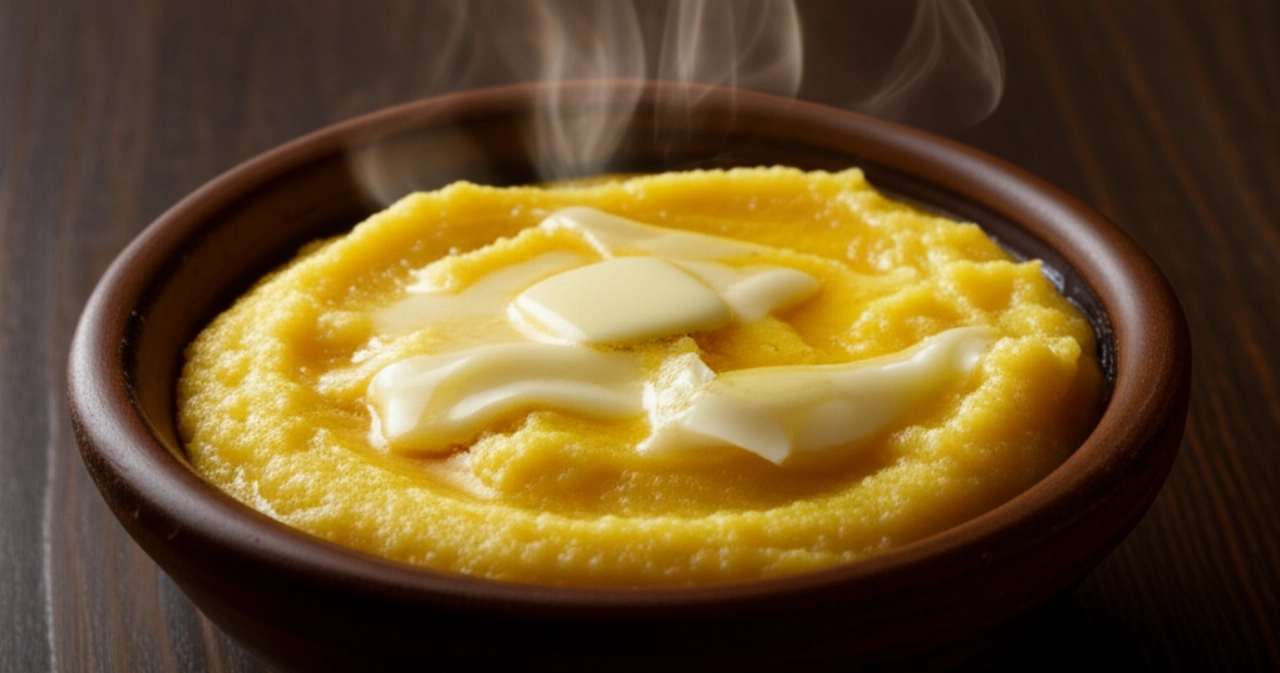
The Secret to Perfect Polenta Concia: Creamy and Stringy Without Mistakes
Our strategic angle, the promise that makes this recipe unique, is Infallible Creaminess and a Stringy Heart. No more hard polenta or lumps! I'll guide you step by step to achieve Polenta Concia with an enveloping creaminess and a stringy cheese heart that will make you fall in love at first bite, without lumps or disappointments. The secret lies in the choice of ingredients, perfect proportions, and a cooking and creaming method that I will reveal in every detail.
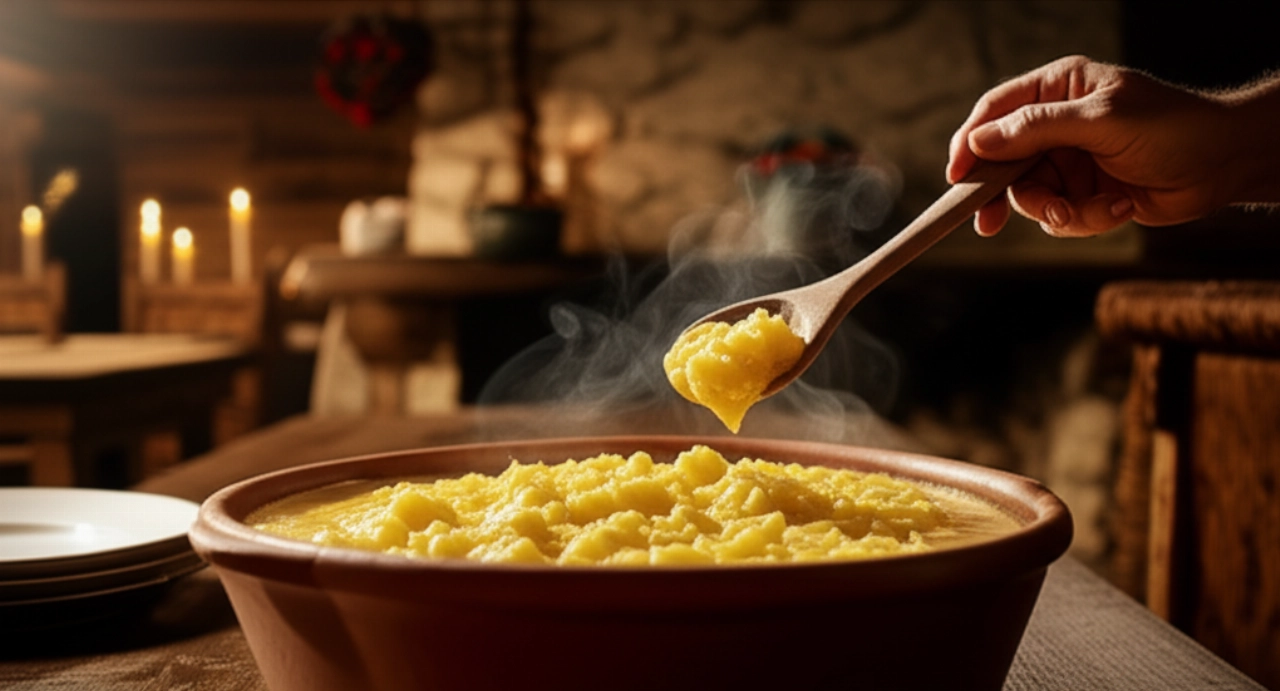
Smart Ingredients for Applause-Worthy Polenta Concia: The Choice That Makes a Difference
When it comes to Polenta Concia, the quality of ingredients is not a detail; it's the foundation of success. I won't just give you a simple list, but I'll explain the "why" behind each choice, just like the most experienced grandmother would.
- Cornmeal for Polenta: For Polenta Concia, I recommend a coarse-ground bramata cornmeal for a more rustic and flavorful texture. If you have less time, you can opt for pre-cooked, but the flavor and texture of bramata are unparalleled. Remember, polenta is the heart of the dish, don't skimp on quality!
- Fontina DOP: This is the main ingredient, the soul of Polenta Concia. Fontina DOP (Protected Designation of Origin) is a semi-hard Aosta Valley cheese, with a sweet and slightly nutty flavor, and an extraordinary ability to melt and become stringy. Do not use generic cheeses; you won't get the same result. Fontina DOP is the only one that guarantees that unmistakable creaminess and stringiness.
- Quality Butter: It seems like a detail, but good butter makes a difference. Choose fresh, good quality butter, preferably mountain butter. It will give that shine and roundness of flavor that make Polenta Concia so irresistible.
- Vegetable Broth or Water: You can use water, but a good vegetable broth (or even a light meat broth) will add depth of flavor to your polenta. The important thing is that it's boiling hot when you add it to the cornmeal, to avoid lumps and facilitate cooking.
- Coarse Salt: To salt the water or broth.
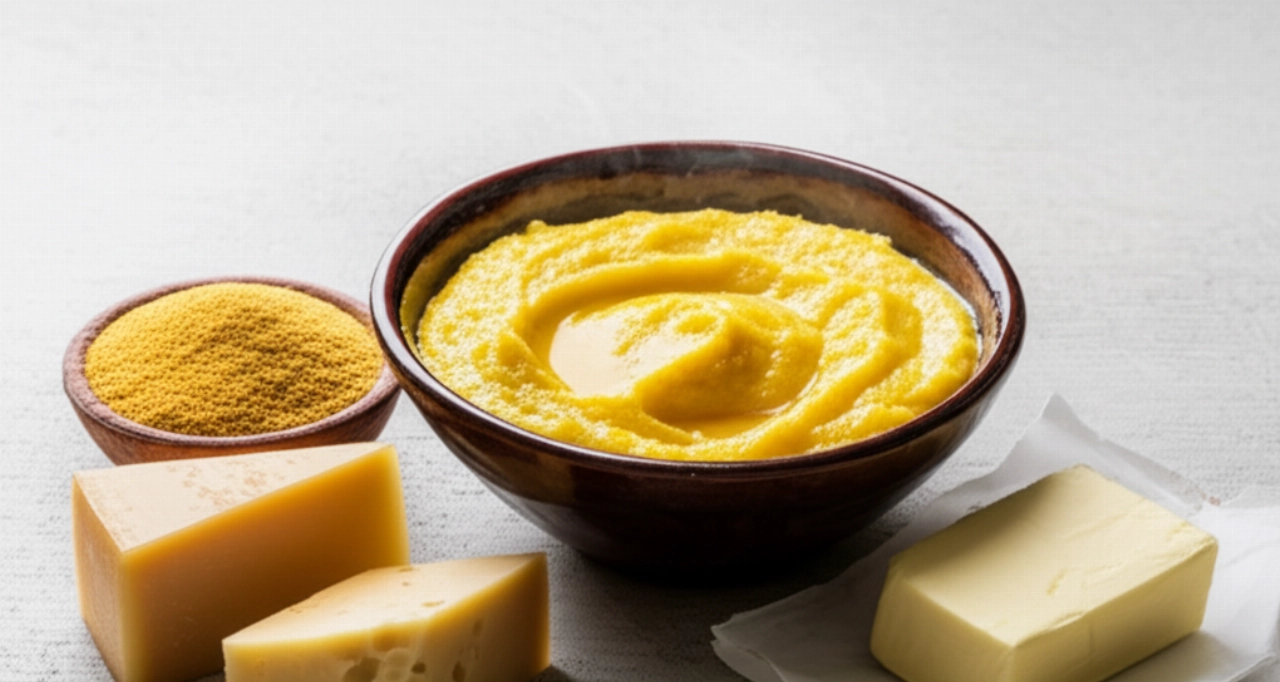
3 Common Polenta Concia Mistakes (and How to Avoid Them for an Infallible Result)
Even the most experienced cooks can stumble into some pitfalls. But don't worry, I'm here to reveal the most common mistakes and how to avoid them, guaranteeing you a perfect dish!
- Not Stirring Well at the Beginning (and Lumps Haunt You): The most frequent mistake is not pouring the cornmeal in a steady stream into boiling water while stirring vigorously with a whisk. If you don't, lumps are guaranteed! Instead, pour the cornmeal slowly, in a thin stream, continuing to stir with the whisk for the first 5-10 minutes. Then you can switch to a wooden spoon.
- Adding the Cheese Too Early or Too Late: If you add the Fontina when the polenta is still too liquid, the cheese will melt, yes, but the polenta won't have the right consistency to "embrace" it. If you add it when it's too cold, it won't melt properly. The perfect moment is at the end of cooking, off the heat, when the polenta is already thick and steaming.
- Not Using the Right Liquid/Cornmeal Proportion (and the Polenta is Too Thick or Too Liquid): Every cornmeal has its own absorption, but generally for bramata polenta, the proportion is about 4-5 parts liquid to 1 part cornmeal (e.g., 2 liters of liquid for 400-500g of cornmeal). Don't be afraid to add a ladle of hot broth if you see it's too thick during cooking, or to slightly extend the cooking time if it's too liquid. The cook's eye is essential!
The Extra Touch: The Tip My Aosta Valley Grandmother Passed Down to Me
My grandmother, a true master of mountain cooking, always told me: "Polenta Concia is not just about ingredients, but about love and patience, and a little secret to make it unforgettable." Her trick? After incorporating the cheese and butter, she wouldn't serve it immediately. She would let it rest for 5 minutes in the pot, covered, off the heat. This short rest allowed the Fontina to blend perfectly, the butter to distribute evenly, and the polenta to achieve unparalleled creaminess and shine. Try it, and you'll see the difference!
Let's Prepare Polenta Concia Together: The Step-by-Step Guide to a Masterpiece
Now that you know all the secrets, it's time to get cooking. Follow these steps and success will be guaranteed!
- Prepare the Liquid: In a thick-bottomed pot (ideal for polenta!), bring 2 liters of vegetable broth (or salted water) to a boil. Make sure it's very hot.
- Add the Cornmeal: When the liquid boils, lower the heat to minimum. Pour the cornmeal in a steady stream, very slowly, stirring continuously and vigorously with a whisk. This is the key step to avoid lumps. Continue stirring with the whisk for the first 5-10 minutes, until the polenta begins to thicken and there are no more lumps.
- Slow and Constant Cooking: At this point, replace the whisk with a sturdy wooden spoon. Continue stirring the polenta, always in the same direction, for about 40-50 minutes (if using bramata cornmeal) or the time indicated on the package (if pre-cooked). The polenta should "detach" from the sides of the pot. Don't rush, patience is the key to perfect polenta!
- Prepare the Fontina: While the polenta cooks, cut 500g of Fontina DOP into small cubes. The smaller they are, the faster and more uniformly they will melt.
- Incorporate the Cheese and Butter: When the polenta is cooked and very thick, remove the pot from the heat. Immediately add the cubed Fontina and 100g of butter cut into small pieces.
- Magical Creaming: Stir vigorously with the wooden spoon, or even better with a sturdy whisk, until the cheese and butter are completely melted and incorporated, creating a smooth, shiny, and stringy cream. This is the moment of creaming, where the polenta acquires its unmistakable creaminess.
- Grandma's Rest: Cover the pot with a lid and let the Polenta Concia rest for 5 minutes. This little trick will ensure that all the flavors blend perfectly and the consistency becomes even more sublime.
- Serve Immediately: Polenta Concia should be enjoyed piping hot, freshly made. Serve it in deep plates, perhaps accompanied by a good mountain red wine.
Tips and Frequently Asked Questions about Polenta Concia
Here are some of the questions I am most often asked about Polenta Concia. I hope they are helpful!
- Can I use other cheeses instead of Fontina? For the traditional recipe and to achieve that unique creaminess and stringiness, Fontina DOP is irreplaceable. You can try with other semi-hard cheeses that melt well (like Asiago or Taleggio), but the result will not be the true Aosta Valley Polenta Concia.
- Can I prepare Polenta Concia in advance? Polenta Concia is best enjoyed freshly made. If you absolutely must, you can prepare the polenta in advance and reheat it in a double boiler or over very low heat with a little broth, adding the cheese and butter only at the last moment. Keep in mind that the consistency might not be identical.
- How can I store leftovers and reheat them? If there are leftovers, you can store them in the refrigerator in an airtight container for 1-2 days. To reheat, place it in a pot with a splash of broth or milk and heat over very low heat, stirring continuously, until it becomes creamy again.
- My polenta is too thick/liquid, what do I do? If it's too thick, add a ladle of boiling broth and mix well. If it's too liquid, continue cooking, stirring until it reaches the desired consistency. Experience will help you understand the right density.
A Masterpiece of Flavor and Tradition: Your Polenta Concia is Ready!
There you have it! Now you no longer just have a recipe, but all the secrets to bring to the table a dish that tastes of home, mountains, tradition, and love. Your Polenta Concia will be a true triumph of flavors and textures, a warm embrace that will win everyone over at first bite. Don't be afraid to get cooking and experiment. Cooking is an act of creativity and passion. But start from this solid and infallible base, and you'll see that applause will not be lacking.
Have you tried our recipe? We are very curious to see your masterpiece! Leave a comment below, tell us how it went, or share a photo on Instagram tagging @CercaRicette.it. If you loved this Polenta Concia, you can't miss our recipe for Aosta Valley Stew, a perfect pairing, or discover how to prepare homemade vegetable broth to elevate all your dishes!

